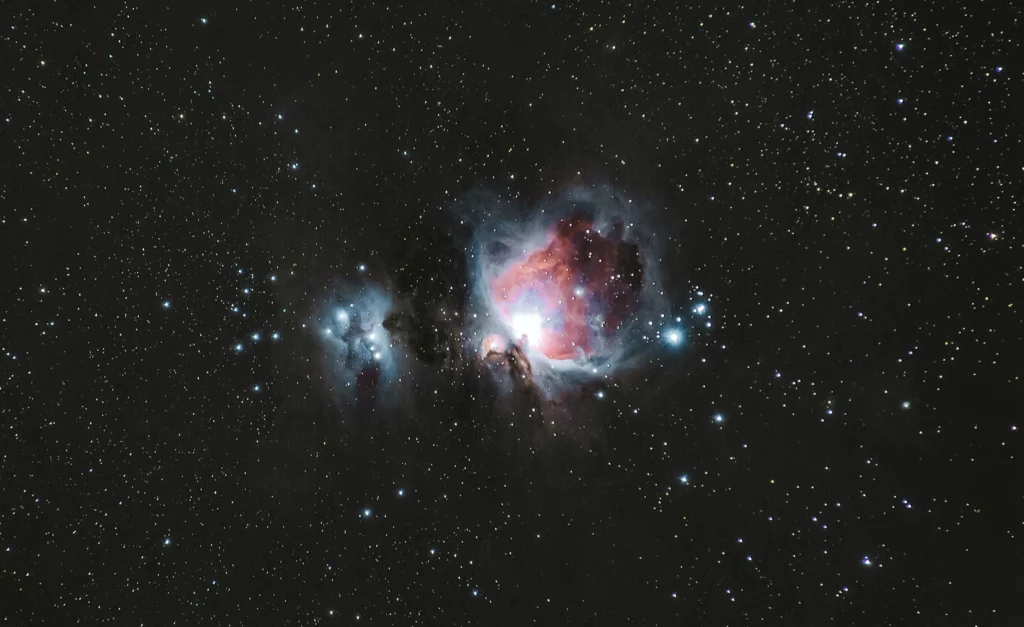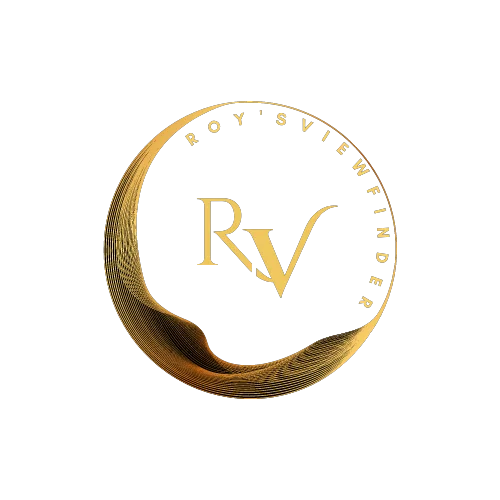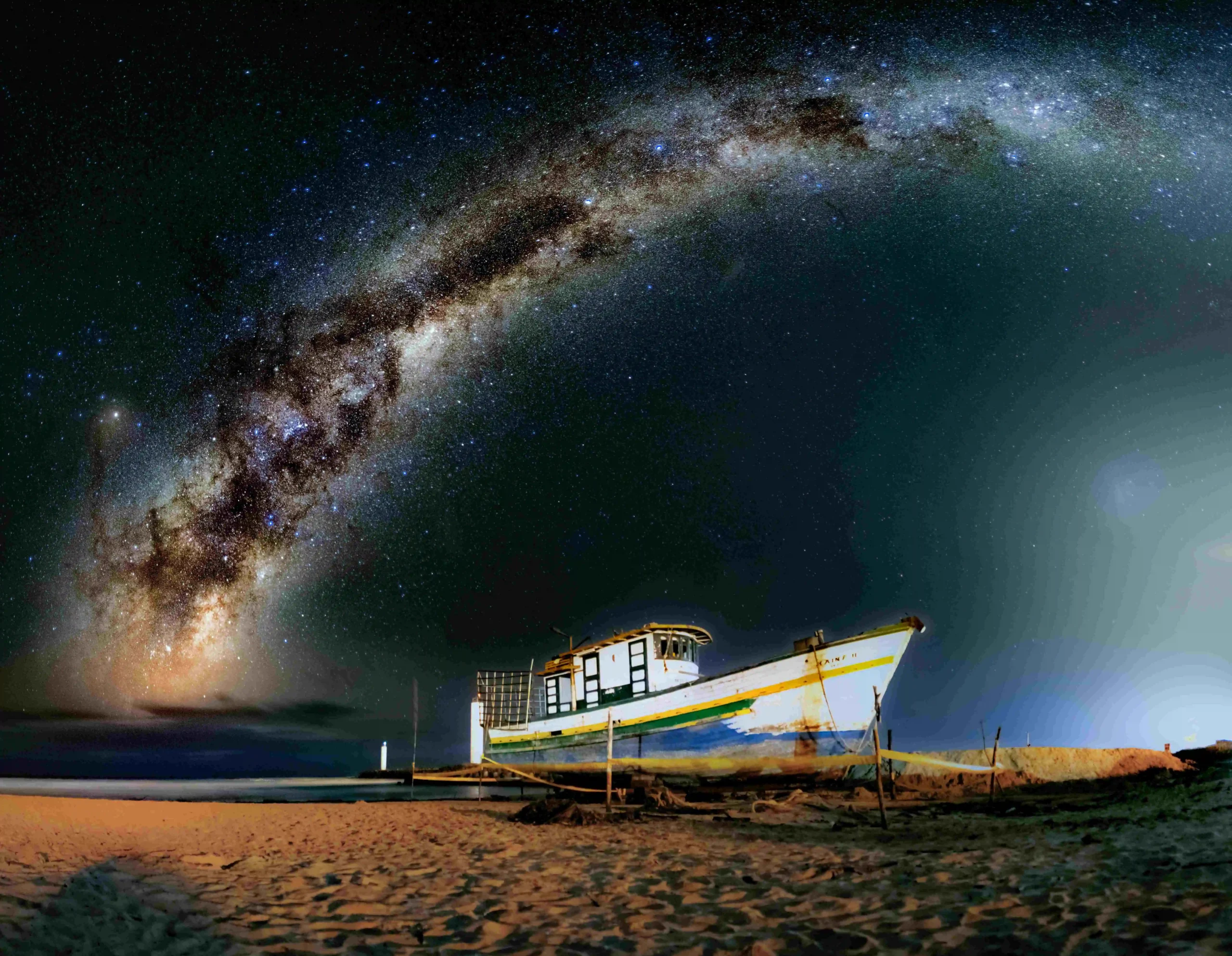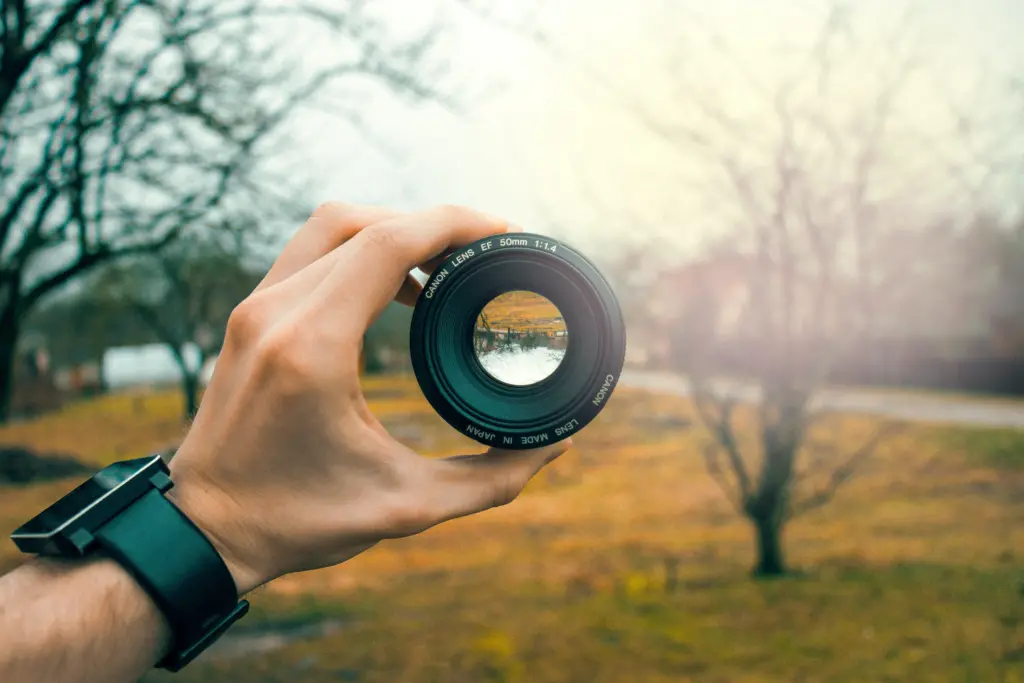Have you ever gazed up at the night sky and wondered what lies beyond the stars? Astrophotography allows us to capture the beauty of the cosmos and bring it down to earth. But with so many telescopes on the market, it can be overwhelming to choose the best one for Astrophotography. In this blog, we’ll explore the factors to consider when selecting the best telescope for Astrophotography, as well as some popular models to help you capture stunning images of the night sky. Whether you’re a beginner or a seasoned Astrophotographer, this guide will help you find the perfect telescope to take your stargazing to the next level. In this article, we will explore the best telescopes for Astrophotography, and the factors to consider when choosing a telescope for Astrophotography.
What is Astrophotography?
Astrophotography is capturing night sky objects like stars, galaxies, and comets. It needs specialized equipment like telescopes and cameras. Astrophotography involves capturing celestial objects using specialized equipment like telescopes and cameras for detailed images. It requires patience and time for processing. The resulting images serve scientific research and public education about the universe. Let’s explore the best telescope for Astrophotography.

Types of Telescopes for Astrophotography
A. Refractor Telescopes
Refractor telescopes are a popular choice for Astrophotography enthusiasts due to their excellent image quality. These telescopes use lenses to gather and focus light, resulting in clear and sharp images.
The main advantage of refractor telescopes is their ability to provide high-contrast and color-corrected images. Reflector telescopes have a central obstruction that causes diffraction and results in less sharp images. This is not the case with refractor telescopes.
Refractor telescopes come in a variety of sizes, from small tabletop models to large, professional-grade instruments. The aperture size determines the light-gathering power of the telescope, with larger apertures being able to capture fainter objects.
Overall, refractor telescopes are a reliable and user-friendly option for Astrophotography enthusiasts. With their ability to produce stunning and detailed images of the night sky, refractors are a favorite among amateurs and professionals alike.
B. Reflectors Telescopes
Reflectors and telescopes use mirrors instead of lenses to gather and focus light. The primary mirror in a reflector telescope reflects the light to a secondary mirror which then reflects it to the eyepiece, allowing for observation of the image. Reflector telescopes have the main advantage of being generally less expensive than refractors for larger apertures because manufacturers can produce mirrors at a lower cost than lenses.
However, one downside of reflector telescopes is that they require more frequent maintenance than refractors, specifically collimation. Collimation refers to the alignment of the mirrors in the telescope, which can affect image quality if not properly aligned. Additionally, the open design of reflector telescopes means that dust and other debris can accumulate on the mirrors and affect image quality. Despite these challenges, many amateur and professional astronomers use reflector telescopes for their affordability and versatility.
C. Catadioptric Telescopes
Catadioptric telescopes, also known as compound telescopes, use a combination of lenses and mirrors to gather and focus light. This design allows for a more compact and portable telescope compared to traditional reflectors or refractors with the same aperture size. Catadioptric telescope for Astrophotography also provides a wide field of view and high magnification, making them a great choice for Astrophotography. However, due to their complex design and use of specialized materials, catadioptric telescopes tend to be more expensive than other types of telescopes. Despite their high cost, many amateur astronomers and astrophotographers prefer catadioptric telescopes for their excellent image quality and versatility.
Aperture and Focal Length
A. Aperture
Aperture refers to the diameter of the telescope’s primary lens or mirror. It determines how much light the telescope can gather, with larger apertures allowing for brighter, more detailed images.
B. Focal Length
Focal length is the distance between the telescope’s primary lens or mirror and the focal point where light converges. It determines the telescope’s magnification power and field of view.
C. F-ratio
F-ratio, or focal ratio, is the ratio of the telescope’s focal length to its aperture. It determines the telescope’s light-gathering ability and potential image sharpness.
Mounts for Astrophotography
A. Altazimuth Mounts
Altazimuth mounts are a common type of telescope mount that allows the telescope to move vertically and horizontally, similar to how a camera tripod operates. These mounts are typically easier to use and more intuitive than equatorial mounts, making them a great choice for beginners. However, altazimuth mounts are not as precise as equatorial mounts and can be challenging for Astrophotography. This is because the rotation of the Earth causes celestial objects to move across the sky in a diagonal path, making it difficult to track them with an altazimuth mount without frequent adjustments. Despite this, altazimuth mounts are still a popular choice for visual observation and offer a lightweight and portable option for astronomers on the go.
B. Equatorial Mounts
Equatorial mounts are an essential tool for Astrophotography, as they provide accurate tracking of celestial objects and compensate for the Earth’s rotation. These mounts are designed to align with the Earth’s axis, allowing for smooth and precise tracking of objects in the night sky.
Equatorial mounts come in two main types: German Equatorial Mounts (GEM) and Fork Mounts. GEMs are the more popular option and consist of a counterweight and two axes, one for right ascension and one for declination. Fork mounts, on the other hand, use a single arm to hold the telescope and mount it to a wedge that aligns with the Earth’s axis.
One of the benefits of using an equatorial mount for Astrophotography is that it allows for longer exposures of objects in the sky. Equatorial mounts enable longer exposures of celestial objects, making them ideal for Astrophotography. Consider weight capacity, compatibility, and features when selecting one. Modern mounts often have autoguiding and Go-To systems, simplifying tracking. Equatorial mounts are a great way to enhance both observing and Astrophotography skills.
C. Motorized Mounts
Motorized mounts are a type of telescope mount that utilizes an electric motor to automatically track celestial objects as they move across the sky. This is particularly useful for Astrophotography, as it allows for longer exposures without the need for frequent manual adjustments. Motorized mounts come in both equatorial and altazimuth configurations and are available at a range of price points, with more advanced models offering features such as computerized go-to functionality and built-in GPS. However, motorized mounts can be expensive and require a power source, making them less portable than non-motorized options. Despite this, motorized mounts are an excellent investment for those who are serious about Astrophotography or who plan to spend long nights observing the cosmos.
Cameras for Astrophotography
A. DSLR Cameras
DSLR cameras are a popular choice for Astrophotography due to their versatility, high resolution, and low noise levels. Astrophotographers can use these cameras to capture a wide variety of subjects, including the moon, planets, and deep-sky objects like galaxies and nebulas. They are also compatible with a range of telescope setups, although they typically require an adapter to connect the camera to the telescope. DSLR cameras can be expensive, particularly when paired with high-quality lenses, but they offer excellent performance and image quality that is hard to match with other types of cameras. Additionally, the ability to use interchangeable lenses means that photographers can easily switch between different focal lengths to capture a range of shots. Overall, DSLR cameras are an excellent choice for those looking to get started with Astrophotography or upgrade their existing setup.
There are many DSLR cameras that are great for astrophotography, but here are some popular options:
- Canon EOS R6 – This is a specialized camera designed specifically for Astrophotography, with a modified infrared filter for improved sensitivity to H-alpha wavelengths.
- Nikon D850 – this camera offers high resolution (45.7 megapixels) and excellent low-light performance, making it a great choice for Astrophotography.
- Canon EOS 6D Mark II – this camera offers a good balance of image quality, low-light performance, and affordability, making it a popular choice for Astrophotography enthusiasts.
- Nikon D750 – this camera is a good all-around performer, with excellent image quality, low noise, and a fast autofocus system that can come in handy when shooting the night sky.
Individual preferences, budgets, and specific needs play a crucial role in determining the best camera for Astrophotography.
B. Mirrorless Cameras
Mirrorless cameras are a type of digital camera that does not use a mirror and prism system to reflect light into the viewfinder. Instead, the image sensor captures light directly, resulting in a more compact and lightweight design. This makes mirrorless cameras a popular choice for Astrophotographers who value portability and ease of use.
Mirrorless cameras have high resolution and low-light performance, surpassing DSLR cameras for Astrophotography. Additionally, some models have built-in image stabilization systems that help reduce camera shake and improve image sharpness.
Mirrorless cameras for Astrophotography offer an electronic viewfinder (EVF) and live view screen, allowing real-time image previews. This helps in taking perfect shots. This can be particularly useful for focusing and framing shots in low-light conditions.
Here are some popular mirrorless cameras that are great for Astrophotography:
- Sony Alpha a7 III – this camera has excellent low-light performance, a full-frame sensor, and a fast autofocus system that makes it a great choice for Astrophotography.
- Fujifilm X-T4 – this camera offers excellent image quality, fast autofocus, and in-body image stabilization, making it a great option for Astrophotography.
- Panasonic Lumix S1H – this camera offers 6K video recording capabilities and excellent low-light performance, making it a good option for Astrophotography and videography.
- Canon EOS R5 – this full-frame mirrorless camera has excellent low-light performance and 8K video recording capabilities, making it a good choice for both Astrophotography and videography.
- Nikon Z7 II – this camera has a high-resolution sensor, excellent low-light performance, and a fast autofocus system, making it a good option for Astrophotography.
Again, the best camera for Astrophotography will depend on your individual needs and preferences, as well as your budget.
C. Dedicated Astrophotography Cameras
Dedicated astrophotography cameras are designed specifically for capturing images of the night sky. Here are some key features and benefits of these types of cameras:
- Large sensors – dedicated Astrophotography cameras typically have larger sensors than regular DSLRs or mirrorless cameras, allowing for more light to be captured and resulting in better image quality.
- High sensitivity – these cameras often have very high sensitivity to light, which allows them to capture faint objects like galaxies and nebulae.
- Cooling system – many dedicated astrophotography cameras have a built-in cooling system to reduce thermal noise, which can affect image quality.
- Long exposures – these cameras are designed for long exposures, which is essential for capturing the faint details of deep-sky objects.
- No anti-aliasing filter – some dedicated astrophotography cameras have no anti-aliasing filter, which can result in sharper images.
Some popular dedicated astrophotography cameras include the ZWO ASI6200MC-Pro, QHYCCD QHY367C, and the Atik Infinity. These cameras can be quite expensive, but for serious astrophotographers, they offer the best image quality and performance.
Accessories for Astrophotography
Filters, Barlow lenses, Eyepieces, Autoguiders, and Field Flatteners are important accessories in astrophotography. Here’s a brief overview of each:
- Filters – Astrophotography filters are used to block certain wavelengths of light and enhance others. Popular filters include light pollution filters, narrowband filters, and UV/IR cut filters.
- Barlow lenses – Barlow lenses are used to increase the effective focal length of a telescope, which allows for higher magnification of objects.
- Eyepieces – eyepieces are used to magnify the image formed by the telescope. High-quality eyepieces are important for achieving sharp and clear images.
- Autoguiders – Autoguiders are used to keep the telescope pointed at a specific object for long exposures. They use a guide star to make small adjustments to the telescope’s position.
- Field Flatteners – Field Flatteners are used to correct for optical distortion that can occur when imaging objects at the edges of the field of view. They help ensure the image remains sharp and distortion-free across the entire field of view.
Having the right combination of accessories can greatly enhance your astrophotography experience and improve the quality of your images. It’s important to choose accessories that are compatible with your specific telescope and camera setup.
Best Telescope for Astrophotography
The Celestron NexStar 8SE, Sky-Watcher Skymax 127mm Maksutov-Cassegrain, and Orion 09007 SpaceProbe 130ST are all popular telescopes for Astrophotography.
- Celestron NexStar 8SE – this telescope has an 8-inch aperture and is equipped with Celestron’s proprietary NexStar computerized mount. It’s easy to use and has a wide range of features, including SkyAlign technology, which makes alignment quick and simple.
- Sky-Watcher Skymax 127mm Maksutov-Cassegrain – this telescope has a 10-inch aperture and a dual-speed 2-inch Crayford focuser. The telescope includes a solid tube ring and a Losmandy-style dovetail bar, simply attached to a mount.
- Orion 09007 SpaceProbe 130-ST – this telescope has an 8-inch aperture and a dual-speed Crayford focuser. The telescope includes a sturdy mount usable in altazimuth and equatorial modes for visual and Astrophotography purposes, maximizing versatility.
All of these telescopes have their own unique features and advantages. Factors like aperture, focal length, mount type, experience, and needs should be considered when choosing a telescope for Astrophotography.
Conclusion
When it comes to Astrophotography, selecting the best telescope is essential for capturing clear and high-quality images of the cosmos. The factors that contribute to the ideal telescope include aperture, focal length, and f-ratio. The stability and tracking of objects in the sky depend on the type of mount used to hold the telescope. The different types of mounts include Altazimuth and Equatorial, with motorized options available for both types.
Accessories such as filters, Barlow lenses, eyepieces, and field flatteners are important considerations for maximizing the potential of telescope Astrophotography. Dedicated astrophotography cameras and DSLR/mirrorless cameras can be used in conjunction with these accessories to achieve stunning results.
Three popular telescope models for Astrophotography are the Celestron NexStar 8SE, Sky-Watcher Skymax 127mm Maksutov-Cassegrain, and the Orion 09007 SpaceProbe 130ST. Each has unique features and benefits, and it’s essential to consider personal preferences and individual needs when selecting a telescope.
Careful research and consideration of factors can help Astrophotographers select the best telescope for capturing images of the night sky.









